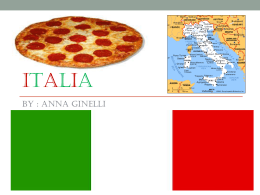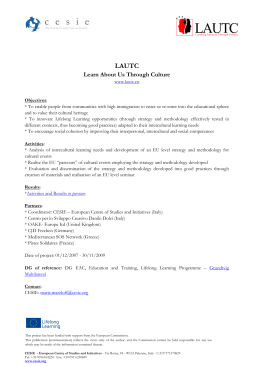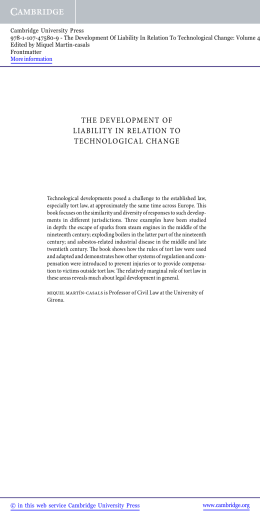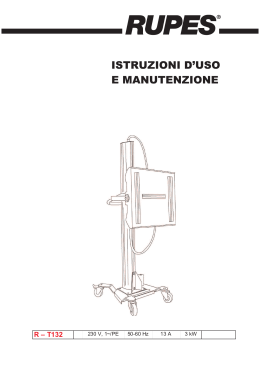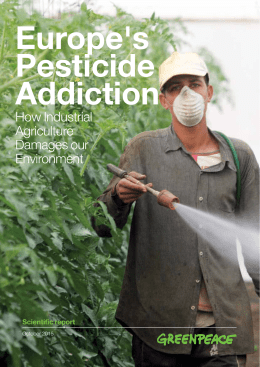® Product Liability in 37 jurisdictions worldwide Contributing editors: Harvey L Kaplan and Gregory L Fowler 2009 Published by Getting the Deal Through in association with: A&L Goodbody Advokatfirman NorelidHolm Deneys Reitz Inc Dorda Brugger Jordis Drzewiecki Tomaszek & Partners Formosan Brothers Garcia & Bodán Gianni, Origoni, Grippo & Partners Hammarström Puhakka Partners, Attorneys Ltd Kim & Chang M & P Bernitsas Law Offices Mallesons Stephen Jaques Marić Law Office Mayora & Mayora SC Noetinger & Armando Nörr Stiefenhofer Lutz Pérez Bustamante & Ponce Pietrantoni Méndez & Alvarez LLP Pinheiro Neto Advogados PLMJ – Sociedade de Advogados, RL Portilla, Ruy-Díaz y Aguilar, SC Radnóczy & Mészáros – Nörr Stiefenhofer Lutz Iroda Shook Hardy & Bacon LLP S Horowitz & Co Simmons & Simmons Smith & Partners Stikeman Elliott LLP Tilleke & Gibbins International Limited Walder Wyss & Partners Ltd contents ® Product Liability 2009 Global Overview Harvey L Kaplan Shook Hardy & Bacon LLP 3 Argentina Miguel N Armando and Luis E Denuble Sánchez Noetinger & Armando Contributing editors Harvey L Kaplan and Gregory L Fowler Shook Hardy & Bacon LLP Australia Moira Saville and Robyn Chalmers Mallesons Stephen Jaques Business development manager Joseph Samuel Marketing managers Alan Lee Dan Brennan George Ingledew Edward Perugia Robyn Hetherington Dan White Tamzin Mahmoud Elle Miller Marketing assistant Ellie Notley Subscriptions manager Nadine Radcliffe Subscriptions@ GettingTheDealThrough.com Assistant editor Adam Myers Editorial assistants Nick Drummond-Roe Charlotte North 4 10 Austria Georg Jünger Dorda Brugger Jordis 17 Bosnia and Herzegovina Marić Branko and Anisa Strujić–Tomić Marić Law Office 22 Brazil Júlio César Bueno Pinheiro Neto Advogados 29 Canada Douglas Harrison and Samaneh Hosseini Stikeman Elliott LLP 37 China Terence Lee and Gao Jie Smith & Partners 44 Czech Republic Philip Smitka Nörr Stiefenhofer Lutz vos 50 Ecuador Rodrigo Jijón Pérez Bustamante & Ponce 56 El Salvador Daniel Martinez and Geraldo Cruz Garcia & Bodán 62 England & Wales Simon Castley and Aaron Le Marquer Shook, Hardy & Bacon International LLP 66 Finland Pekka Puhakka and Johan Pråhl Hammarström Puhakka Partners, Attorneys Ltd 71 France Jacques-Antoine Robert and Alexandre Regniault Simmons & Simmons 77 Germany Michael Molitoris and Boris Handorn Nörr Stiefenhofer Lutz 83 Greece Christina Vlachtsis and George Atie M & P Bernitsas Law Offices 90 Guatemala Eduardo A Mayora Mayora & Mayora SC 96 Honduras Terencio J García Montenegro Garcia & Bodán 102 Hong Kong Terence Lee and Karrie Cheung Smith & Partners 106 Hungary Ákos Bajorfi Radnóczy & Mészáros – Nörr Stiefenhofer Lutz Iroda 112 Senior production editor Jonathan Cowie Subeditors Jonathan Allen Kathryn Smuland Sara Davies Laura Zúñiga Ariana Frampton Sarah Dookhun Ireland Marcus Beresford A&L Goodbody 119 Israel Avi Ordo S Horowitz & Co 125 Italy GianBattista Origoni and Barbara Ferraris Gianni, Origoni, Grippo & Partners 132 Korea Sang-Ho Han and In-Hak Lee Kim & Chang 138 Mexico Carlos Fernando Portilla Robertson and Enrique Aguilar Hernández Portilla, Ruy-Díaz y Aguilar, SC 143 Editor-in-chief Callum Campbell Publisher Richard Davey Nicaragua Margina Baca Garcia & Bodán 148 Poland Andrzej Tomaszek and Magdalena Łuczak-Golenia Drzewiecki Tomaszek & Partners 152 Portugal Tomás Pessanha, Diogo Duarte de Campos and Luís Vaz Bravo PLMJ – Sociedade de Advogados, RL 158 Puerto Rico Néstor M Méndez, Heidi L Rodríguez and María D Trelles Hernández Pietrantoni Méndez & Alvarez LLP 164 Romania Alexandru Ene and Diana Grigoroiu Nörr Stiefenhofer Lutz 171 Russia Ekaterina Kalinina and Thomas Mundry Nörr Stiefenhofer Lutz OOO 177 Slovakia Pavol Rak Nörr Stiefenhofer Lutz sro 184 South Africa Donald Dinnie and Michael Hart Deneys Reitz Inc 189 Sweden Christer A Holm Advokatfirman NorelidHolm 196 Product Liability 2009 Published by Law Business Research Ltd 87 Lancaster Road London, W11 1QQ, UK Tel: +44 20 7908 1188 Fax: +44 20 7229 6910 © Law Business Research Ltd 2009 No photocopying: copyright licences do not apply. ISSN 1757-0786 The information provided in this publication is general and may not apply in a specific situation. Legal advice should always be sought before taking any legal action based on the information provided. This information is not intended to create, nor does receipt of it constitute, a lawyer–client relationship. The publishers and authors accept no responsibility for any acts or omissions contained herein. Although the information provided is accurate as of March 2009, be advised that this is a developing area. Switzerland Dieter Hofmann and Jan Hoffmann Walder Wyss & Partners Ltd 201 Taiwan Wei-Chun Chen and Chih-Peng (Xavier) Chang Formosan Brothers 206 Thailand Michael Ramirez Tilleke & Gibbins International Limited 211 United States Gregory L Fowler and Marc E Shelley Shook, Hardy & Bacon LLP 217 Printed and distributed by Encompass Print Solutions Tel: 0870 897 3239 Law Business Research www.gettingthedealthrough.com Italy Gianni, Origoni, Grippo & Partners Italy GianBattista Origoni and Barbara Ferraris Gianni, Origoni, Grippo & Partners Civil litigation system 1 The court system What is the structure of the civil court system? In Italy there are three levels of courts: first-instance courts (justices of the peace and tribunals); second-instance courts (courts of appeal for judgments rendered by tribunals, and tribunals for judgments rendered by justices of the peace); and the Court of Cassation (Supreme Court). The justice of the peace courts have jurisdiction over legal actions up to the value of approximately e2,600; damages caused by floating or vehicular traffic up to the value of approximately e16,000; and some specific subject matters. Cases filed with the justice of peace in which the amount claimed is less than e1,100 may be decided ‘according to principles of equity’, which means on a ‘commonsense’ basis. In these cases the justice of the peace may depart from the rules of law, provided that the principles of the legal system are respected. Tribunals have first-instance jurisdiction over all cases not expressly allocated to other courts and second-instance jurisdiction over decisions issued by the justices of the peace. Courts of appeals have first-instance jurisdiction over some specific matters and second-instance jurisdiction over decisions issued by the tribunals. The Court of Cassation is at the top of the hierarchy. It is the court of last resort and its task is to ensure the consistent interpretation and application of the law. The Court review is limited to issues regarding the interpretation and correct application of the law, as the Court does not review any assessment of facts made by the judge in the trial. 2 Judges and juries What is the role of the judge in civil proceeding and what is the role of the jury? Italy relies upon an adversarial judicial system and there are no juries in civil proceedings. 3 Pleadings and timing What are the basic pleadings filed with the court to institute, prosecute including the reference to any evidentiary means by which the plaintiff intends to prove the allegations. The defendant’s first pleading must include any defence arguments and means of evidence. At the first hearing, any of the litigants may request a term within which to file defensive briefs aimed at amending the respective claims, defence arguments and requests for evidence. The parties are also entitled to file briefs replying to the opposite party’s allegations. The judge, who is not bound to apply the law indicated by the parties (iura novit curia principle), will then set a date for a hearing, during which the items of evidence requested by the parties and considered relevant and admissible will be gathered. Once this has been done, the parties can file – or discuss orally – their final pleadings and then reply to the final pleadings of the other party. 4 Trials What is the basic trial structure? Italian civil proceedings can be broadly divided into three phases: •introductory phase – this is to assess the formal and procedural regularity of the proceedings, with regard to the parties (relevant legal standing and powers), jurisdiction of the court, and all the other procedural issues that may prevent the case from reaching the subsequent phase. The court examines the request for evidence and admits the requests it deems appropriate; •evidentiary phase – the evidence admitted by the court is gathered, witnesses are examined and experts appointed by the judge render their opinions; and •decision phase – this includes the evaluation of the collected evidence and of the arguments submitted by the parties. This leads to the final decision. There is no the distinction between pre-trial and trial phases found in the common law system. The same judge presides over all three phases, which are not formally divided; the judge sets the dates for the hearings, checks that there are no procedural flaws, rules on the requests of the parties, appoints experts and conducts and oversees the evidence-taking activities up to the final decision. Only the judge can question witnesses, putting to them questions previously submitted by the parties and accepted by the judge. and defend the product liability action and what is the sequence and timing for filing them? A product liability action is governed by the same rules as are set for ordinary proceedings by the Code of Civil Procedure. A case begins with the plaintiff’s writ of summons, which includes all the claims against the defendants. In the writ the plaintiff must clearly state the type of relief sought (ie, claim for compensation for damages) and the facts and points of law supporting the claim, 132 5 Group actions Are there class, group or other collective action mechanisms available to product liability claimants? Can such actions be brought by representative bodies? A collective representative action was introduced in Italy with the law approved on 21 December 2007 that, however, is still to be put into effect. As a matter of fact, the availability of the relief was postponed Getting the Deal Through – Product Liability 2009 Gianni, Origoni, Grippo & Partners first to 1 January 2009 (by means of Law Decree No. 112 dated 25 June 2008) and then to 1 July 2009 by means of Law Decree No. 207 dated 30 December 2008, in order to amend the current structure. According to the current provisions, a collective action can be started by ‘duly representative’ consumers’ associations in order to request compensation for damages or reimbursement in favour of consumers in the event of unlawful behaviour damaging a plurality of persons, including product liability. The action is based on an opt-in system and the decision of the court is not a direct condemnation but rather sets the criteria to be used to calculate the amount to be paid to the consumers or, if possible, establishes the minimum amount to be paid to each consumer. The assessment of individual damages is then referred to a subsequent settlement or litigation. 6 Timing How long does it typically take a product liability action to get to the trial stage and what is the duration of a trial? The average length of a product liability action, and of civil proceedings in general, ranges from one to five years, depending mainly on the evidentiary means offered by the parties and admitted by the court and on the workflow of each individual court. Italy examination the party is not bound to answer, and the statements rendered are not considered as technical evidence. The formal and free examinations are not used often, because the examination is not under oath and a possible lie would not be punished as perjury as the party is not – technically – a witness (principle of ‘privilege against self incrimination’). A party’s ‘oath’ is a sworn statement affirming that one or more of the alleged facts is true. It is taken only upon the request of the opposite party, and the party requested to take the oath may also ask the other party to do the same. The oath, when taken, provides ‘legal’ evidence and conclusive proof of the facts. On the contrary, when the party requested to take the oath refuses to do so or fails to appear, the relevant facts are regarded as established. In practice, oaths are rarely used. Written witness statements are not permitted. The court can rely only upon evidence provided by the parties, and must refrain from personally investigating facts deemed relevant to the case. Nonetheless, the judge is entitled to appoint one or more experts, in order to ground his or her decision in facts or circumstances of general knowledge and to call witnesses referred to by other witnesses during their testimony. The judge may ground his or her findings on certain particular items of evidence and disregard other items, provided that a logical and detailed explanation for this is given in the decision. Evidentiary issues and damages 7 Pre-trial discovery and disclosure What is the nature and extent of pre-trial preservation and disclosure of documents and other evidence? Are there any avenues for pre-trial discovery? The Civil Code sets forth the preservation of documents for companies and professionals. No formal US-style discovery exists. Any party can ask the judge to order the filing of specific documents with the court. 8 Evidence How is evidence presented in the courtroom and how is the evidence cross-examined by opposing party? In the Italian civil law system considerable weight is given to written evidence. The basic principle is that oral testimony is allowed in cases where documents are either unavailable or unreliable. Apart from very unusual cases, all evidence must be given verbally at the hearings and written statements are not allowed. When the parties submit their requests for evidence, they must also include a list of people to be called to testify, along with the list of questions to the witnesses. The judge rules on the admissibility of both witnesses and questions. Only witnesses of fact can be admitted and no personal evaluation can be expressed by the witness; it follows that experts cannot be used as witnesses. The parties are not entitled to question the witnesses directly and no formal cross-examination exists: it is only the judge who questions the witnesses, while the parties can suggest questions to the judge. The parties cannot be witnesses, but upon the request of a party, the adverse party or its legal representative can be summoned for a ‘formal examination’. Formal examination is a kind of evidence – not often used – aimed at achieving a confession. The party can be questioned only by the judge, and only on the questions previously approved by the judge. The party cannot be forced to appear, but if he or she fails to appear or refuses to answer, the judge can consider the facts as admitted. Moreover, the court can order the parties to appear in order to question them informally (‘free examination’). During a free www.gettingthedealthrough.com 9 Expert evidence May the court appoint experts? May the parties influence the appointment and may they present the evidence of experts they selected? When the case requires specific technical knowledge, the judge may appoint, also upon a party’s request, one or more experts (consulente tecnico di ufficio, CTU) to act as judge’s assistants and provide their technical opinions. The CTU cannot make legal assessments, establish the existence of legal provisions or assess documentary evidence. Each party can appoint its own retained expert to work together with the CTU. Usually the CTU files a written report, including the remarks and comments made by the parties’ experts. The expert can be summoned to the hearing to explain the outcome of his or her activity or to reply to the questions raised by the lawyers and by the parties’ experts. The parties’ experts can submit their own final report to the court. It is the judge’s duty to evaluate the findings of all experts. The judge may disagree with the conclusions reached by the CTU, as long as he or she provides adequate grounds for this disagreement. The parties may appoint experts even if the court does not appoint a CTU and these experts can draft reports. 10 Compensatory damages What types of compensatory damages are available to product liability claimants and what limitations apply? All damages, including both pecuniary and non–pecuniary damages, suffered by the injured party are recoverable. For years, courts and scholars have made reference to four categories of damages: •economic damages – these can consist of monetary damages (pecuniary loss incurred or loss of profits); •biological damages – damages to the psychological and physical integrity of a person, directly related to his or her health; •non-economic or moral damages – non-pecuniary damages (pain and suffering), which can be awarded only in the cases provided for by law (mainly in cases involving criminal offences); and 133 Italy •existential damages – these are non-pecuniary damages ‘created’ by case law to compensate damages not covered by the moral damages rule. The category is relatively undefined, but according to the same case law can cover any event that negatively affects ‘quality of life’. However, a recent decision of the Joint Sections of the Court of Cassation (No. 26962/08) has maintained that non-pecuniary damages are compensable only in the cases provided for by law, namely in two sets of cases: cases in which compensability is expressly acknowledged (for example, in cases in which the tort is characterised by elements that make it amount to a criminal offence); and cases in which, although compensability of such kind of damages is not expressly provided for by any legal provision, the tort seriously prejudiced a personal right that is directly protected by the Constitution. As a consequence of such decision, if the same will be followed by lower courts (in Italy, decisions have only persuasive and not binding effects), damage defined as ‘existential’ is no practically longer compensable as an autonomous category of damages, while nonpecuniary damages must be compensated in full, but without duplications. The damage may also be proved on the basis of mere presumptions, but the damaged person remains burdened with the task to allege the factual elements from which the existence and the extent of prejudice may be gathered. 11 Non-compensatory damages Are punitive, exemplary, moral or other non-compensatory damages available to product liability claimants? Italian traditional legal theories state that any damage not aimed at fully compensating the injured party for distress actually suffered (punitive, exemplary, etc) is not permitted. It should be noted that some scholars and some legal provisions, in specific areas, are to some extent in support of not strictly compensatory damages. Litigation funding, fees and costs 12 Legal aid Is public funding such as legal aid available? If so, may potential defendants make submissions or otherwise contest the grant of such aid? An indigent party can access legal aid, provided that the claim is not clearly groundless. In order to obtain legal aid, the party must file an application to the local bar association. Thereafter, the court before which the proceedings are pending may cancel the legal aid if the income of the party is found to be above the threshold set by the law, or that the requirements provided by the law do not exist or if it deems that the party has acted or defended itself with malice or gross negligence. Legal aid includes lawyers’ fees and any other costs linked to the case. When legal aid is granted, some of the costs are anticipated by the state and others are waived. Legal aid is, however, not widespread, due to its limitation in admissibility and because – in general – litigation in Italy is not particularly expensive. Gianni, Origoni, Grippo & Partners 14 Contingency fees Are contingency or conditional fee arrangements permissible? Pursuant to Law Decree No. 223 passed by Law 248/2006, the minimum mandatory tariffs for lawyers have been abolished, as well as the ban on contingency or conditional fees. As a consequence, the parties may now agree for legal fees to be calculated as a percentage of the sum awarded to the plaintiff (while any form of transfer of credits in favour of the lawyers remains prohibited). 15 ‘Loser pays’ rule Can the successful party recover its legal fees and expenses from the unsuccessful party? The court’s final decision also awards costs. As a general rule, the losing party has to pay both the expenses and the fees of the winning party; however, this does not mean that the winner will certainly recover all costs, as the court does not liquidate the effective costs incurred but determines the fees to be reimbursed on the basis of the professional tariffs. The court may also deny the recovery and settle the expenses, when serious circumstances explained in the judgment require this. As a matter of fact, the court frequently deems it not appropriate for a company to recover costs against losing individuals. Sources of law 16 Product liability statutes Is there a statute that governs product liability litigation? EU Directive No. 85/374 on product liability was implemented in Italy in 1988 by the Product Liability Act, as amended by Legislative Decree No. 25/2001 (the PLA). Legislative Decree No. 115/95, implementing European Directive No. 1992/59, amended by Legislative Decree No. 172/04, implementing European Directive 2001/95, which introduced general obligations on product safety, to a certain extent supplements the PLA, imposing an obligation on manufacturers and producers to withdraw unsafe products from the market. These Acts have been incorporated into the Consumer Code enacted in 2005. In general terms, the provisions of these Acts are a response to the difficulties that consumers had been facing in seeking damages caused by a defective product, relying on the ‘traditional theories of liability’, namely in contract or in tort, as the former implied that the action had to be laid against the party with which the consumer had signed a contract (usually the seller) and the latter implied the fault of the manufacturer, that had to be proven by the consumer. On the contrary, the EU Directive and now the Consumer Code have provided a new kind of liability, which is strict, not fault-based, and can be claimed directly against the manufacturer, regardless of the existence or not of a contract between the latter and the consumer or user. 17 Traditional theories of liability What other theories of liability are available to product liability claimants? 13 Third-party litigation funding Is third-party litigation funding permissible? Generally speaking, third-party litigation funding is permissible but not common. 134 As discussed above, pursuant to most widespread case law, further to the Consumer Code, claimants may claim compensation on the basis of tort or contract liability, or both. Tort is based on the ‘duty of care’ concept. The main rule establishes that: ‘Any person who wilfully or negligently commits an act causing another party to suffer unjust damages shall be required to pay compensation for such damages’. Getting the Deal Through – Product Liability 2009 Gianni, Origoni, Grippo & Partners Additionally, the Italian system provides for a strict liability, based on a presumption of liability on subjects who perform a ‘dangerous activity’, so that ‘[w]hoever has caused injuries to others while performing dangerous activities (defined as dangerous by their nature or because of the type of instruments used to perform them), is required to pay compensation, if he or she is unable to prove that all measures which would have been suitable to avoid any injuries have been adopted’. The presumption of liability exempts the injured party from the burden of proving the fault of the allegedly liable party. Contractual liability, based upon the breach of an obligation undertaken by one of the parties, relies on the general rule according to which in the event of non-performance or imperfect performance of the contract (which includes the supply of a defective product), the seller and the lessor are liable to the buyer, leaseholder or user, unless they can prove that non-performance was due to facts beyond their control. For contractual liability, compensation is limited to reasonably foreseeable damages at the time of entering into the contract. 18 Consumer legislation Is there a consumer protection statute that provides remedies, imposes duties or otherwise affects product liability litigants? The Consumer Code was put in place in 2005, to gather together and consolidate all the different provisions concerning consumers already in force in Italy. It consists of 146 articles divided into six parts: •part I contains the ‘general provisions’ governing consumers’ and users’ rights. In particular, section 2 contains a list of consumers’ rights, eg, the right to protect health; the right to safety and quality of products and services; the right to adequate information and fair advertising; the rights to fairness, transparency and equity in contractual relationships; •part II deals with consumers’ education, information to the same (on quality, price, risks of the product, etc) and advertising; •part III contains the provisions on contracts signed by consumers; •part IV concerns the quality and the safety of products: in particular it contains provisions on liability for defective products, legal guarantee of conformity and commercial guarantee for goods; •part V deals with consumers’ associations and their right to take legal action, without preventing the consumer from suing. Consumers’ associations are entitled to act in defence of consumers’ health, safety and quality of goods and services, adequate information and fair advertising; and •part VI contains the final provisions. Italy 20 Novel theories Are any novel theories available or emerging for product liability claimants? There are no significant novel theories available to claimants. In general terms, theories on product liability litigation are still developing, often in connection with the debate on new forms of damages, such as ‘existential damage’. Also worth noting is an attempt, by several plaintiff lawyers, to ground the local jurisdiction on the election of domicile at the lawyers’ office. The practical outcome would be that the plaintiff has the widest ‘forum shopping’ opportunities. A decision of the Supreme Court is expected in connection with this new theory. 21 Product defect What breaches of duties or other theories can be used to establish product defect? The Consumers’ Code states that a product is defective ‘when it does not provide the safety a person can reasonably expect, taking into account all circumstances’ or, in the case of manufacturing defects, when it does not provide the safety normally provided by other category specimens. In assessing this standard, various factors are considered, including the manner in which the product was distributed and marketed, its clear features, the instructions and warnings provided; the reasonably foreseeable use of the product; and the time the product was put on the market. Consumers’ safety expectations are evaluated based on a series of objective parameters, including price, technical rules (mandatory standards that the manufacturer or producer must comply with), any trials and tests and the current state of technical-scientific knowledge available at the date of distribution of the product. Finally, the reasonable use of the product is evaluated, not in abstract terms but rather in relation to the users at whom the product is aimed (such as the foreseeable use of a toy for children). Three types of defects are contemplated under the Consumers’ Code: manufacturing defects (when the defect is the result of an error in production of an otherwise well-conceived product); design defects (when the defect is inherent to the project itself); defects based on inadequate information (when the product is well conceived and produced, but it is dangerous as placed on the marked without adequate information to users or consumers). 22 Defect standard and burden of proof By what standards may a product be deemed defective and who bears the burden of proof? May that burden be shifted to the opposing party? What is the standard of proof? 19 Criminal law Can criminal sanctions be imposed for the sale or distribution of products determined to be defective? The Consumers’ Code states that it is the manufacturer’s duty to ensure that products placed on the market are safe and grants the power to the relevant authorities to check the safety of products and to order or impose certain means aimed at preventing any possible damages. Manufacturers can be sanctioned for the infringement of the provisions of the Consumers’ Code and may also be sentenced to imprisonment of up to one year. www.gettingthedealthrough.com The injured party bears the burden of proof with regards to the defect of the product, the damages and causality. The merit courts tend to assume the existence of the defect by the damage caused, but recently the Supreme Court took a more severe approach, going back to the burden of proof set out in the Code (Court of Cassation judgment of 15 March 2007, No. 6,007). 23 Possible respondents Who may be found liable for injuries and damages caused by defective products? The principle is that the manufacturer shall be liable for damages caused by its products. Manufacturers, as described by the Consumers’ Code, include: •the manufacturer of the product in the EU; •anyone presenting themselves as the manufacturer by placing 135 Italy a name, trademark or other distinctive sign on the product, or anyone who reconditions the product; •the manufacturer’s representative when the manufacturer is not established in the EU, and importers when there is no manufacturer’s representative established in the EU; and •other parties included in the supply chain, insofar as their activities may affect the standards of safety of a product. Suppliers may also be held liable, but only in the event that the manufacturer has not been identified, and suppliers can be released from liability by allowing the identification of the manufacturer. Gianni, Origoni, Grippo & Partners 27 State-of-the-art and development risk defence Is it a defence to a product liability action that the product defect was not discoverable within the limitations of science and technology at the time of distribution? If so, who bears the burden and what is the standard of proof? Liability is excluded in the event that ‘the scientific and technical knowledge available at the time the product was put on the market was not yet of such a kind as to allow the product to be considered faulty.’ The Consumers’ Code confirmed this exemption, but some authors consider it tacitly revoked by the regulations governing product safety which imposes post-selling obligations. The burden of the proof is borne by the defendant. 24 Causation What is the standard by which causation between defect and injury or damages must be established? Who bears the burden and may it be shifted to the opposing party? With reference to the standard of causation, in a recent judgment the Court of Cassation stated that: ‘in civil cases, the threshold of probability required is lower than that required in criminal cases, which means that in civil cases the causal chain is based on the logic of ‘more probable than not’. In fact, the court agrees on the causal chain according to which wrongdoers shall be liable for the consequences that are ‘usually’ produced by their actions, unless a new fact occurs in relation to which they have no duty or possibility to act (in compliance with the ‘theory of causal regularity’). The law does not set forth the reversal of the burden of the proof, which is on the plaintiff. 25 Post-sale duties What post-sale duties may be imposed on potentially responsible parties and how might liability be imposed upon their breach? As already stated, the Consumers’ Code requires the manufacturer and the distributor to place on the market a safe product and to ensure this foresees a general duty to carry out ‘post-market controls’ (testing the product, monitoring consumers’ claims, etc) and a number of post-sales duties aimed at preventing damages which a defective product might cause. These may include the withdrawal of the product from the market, the recall from the consumers or users and provision of supplementary information aimed at making consumers aware of risks and instructing them on how to avoid damages. Manufacturers are also required to inform the authorities with jurisdiction of any of their products’ defects or risks and cooperate with them in all activities aimed at preventing damages. In turn, the authorities have the power to instruct manufacturers to withdraw or recall any product they deem to be faulty and to supplement information in order to prevent damages. Limitations and defences 28 Compliance with standards or requirements Is it a defence that the product complied with mandatory (or voluntary) standards or requirements with respect to the alleged defect? The fact that the product is in compliance with mandatory standards or requirements is a valid defence, as the Consumers’ Code states that liability is excluded if the defect is due to the compliance of the product with a mandatory law or a binding order. According to commentators, this defence may be applied in the event the mandatory law or a binding order imposes specific conditions or formalities on the manufacturer, but not if the mandatory law or a binding order set forth for minimum safety standards. In this case, compliance with the minimum safety standards required by law does not amount to a valid defence. 29 Other defences What other defences may be available to a product liability defendant? Another exclusion of liability that has, in our experience, proved to be fairly effective is the contribution by the injured party. The Consumers’ Code allows for the total exclusion from compensation if the party, although aware of the defect and the related risks, voluntarily exposes himself or herself to risk of damage. Jurisdiction analysis 30 Status of product liability law and development Can you characterise the maturity of product liability law in terms of its legal development and utilisation to redress perceived wrongs? Although theories and case law on product liability are still developing, there does appear to be a good balance between the provisions governing product liability in terms of compensation of damages suffered by consumers and those aimed at preventing these damages, and in particular those enforcing post-sales duties and post-market controls. Statistically the plaintiff lawyers still tend to rely on different law, as tort liability. 26 Limitation periods What are the applicable limitation periods? The limitation period is three years from the day on which the injured party becomes or should have become aware of the damage, the defect and the identity of the liable party, and 10 years from the day on which the product was placed on the market. If the action is based on the general tort provision, the status of limitation period is five years, as of when the consumers became aware. In a contract liability action the period is 10 years, again from the consumers’ awareness. 136 31 Product liability litigation milestones and trends Have there been any recent noteworthy events or cases that have particularly shaped product liability law? Has there been any change in the frequency or nature of product liability cases launched in the past 12 months? Until the end of the 1960s, judges based manufacturers’ liability on the general tort rule. This solution was extremely detrimental to injured parties in that the burden of proving the manufacturer’s fault lay with the injured party. Case law underwent a crucial transformation in the Saiwa case, decided in 1964. Here the judges made their decision on the basis of the criteria of objective liability and the fault Getting the Deal Through – Product Liability 2009 Gianni, Origoni, Grippo & Partners of the manufacturer was assumed as culpa in re ipsa, ie, implicit due to the damaging nature of the product itself. Further to Saiwa, judges began – although case law is far from uniform – to decide cases of product liability by presuming liability on the part of the manufacturer. In particular, from the 1980s onwards, case law began to refer to other rules to simplify the injured party’s position, including article 2,050 of the Civil Code on dangerous activity, affirming that the expression ‘dangerous activities’ could also include the product as final result of the activity. In this regard, case law on blood infection and drugs should be mentioned. The PLA has had limited application in Italy, as shown by the few rulings made based specifically on this rule. In fact the first action was brought in 1991 and is known as the ‘mountain bike’ case, concerning personal injuries due to the sudden breakage of the column supporting the front gear-shift of a mountain bike and the consequent detachment of the bicycle wheel. Another well-known decision was issued by the Court of Cassation, which excluded the liability of the manufacturer in relation to a swing. The court held that: ‘The Manufacturer of a product that has caused damage shall be exempt from liability […] when it is shown that the safety defect of the product was only manifested in relation to a method of use thereof that did not fall within the use which can be reasonably foreseen by the Manufacturer.’ Among the most recent decisions it is worth mentioning the following ones: Two significant decisions were issued in 2008 by the Joint Divisions of the Supreme Court, ruling on causation and on the statute of limitation. The Joint Divisions have held that in civil litigation the existence of causation does not require a certainty beyond any reasonable doubt; rather, the criterion of ‘more probable than not’ applies. The Supreme Court has also maintained that, when evaluating causality, judges must take into account whether the event could have been foreseen, in the sense that the harm resulting from an act or omission must be reasonably predictable on the basis of statistical or scientific criteria. It is also worth mentioning that the awareness of the risks or the relevant warnings turned out to be a winning defence argument in product liability litigation. With respect to warnings, the Court of Bologna has ruled on the relevant standard and clarified that the warning must be sufficiently explicit to enable the consumer to appreciate the particular hazard involved, especially where the hazard is likely to arise from normal use of the product. In the case at issue, the court has appointed an expert in order to assess not only the existence Italy Update and trends We have not noted any substantive changes in the trend of courts on ruling on cases that shall have been governed according to the legislation of the Consumers’ Code, on the grounds of the general principles of tort liability or those provided for by the Civil Code. of a defect in the product, but also the adequacy of the information provided on the product. Case law continued to decide many cases of product liability on the basis of Civil Code rules also after the effective date of the PLA. This situation could change following the decision C-52/00 of 25 April 2002 of the European Court of Justice, stating that: The reference in Article 13 of the Directive to the rights that an injured person may rely on under the rules of the law of contractual or non-contractual liability must be interpreted as meaning that the system of rules put in place by the Directive, which in Article 4 enables the victim to seek compensation where he/she proves damages, the defect in the product and the causal link between such defect and the damages, does not preclude the application of other systems of contractual or non-contractual liability based on other grounds, such as fault or a warranty in respect of latent defects […] Article 13 of the Directive cannot be interpreted as giving the Member States the possibility of maintaining a general system of product liability different from that provided for in the Directive. On the basis of this decision it is arguable the injured party can rely on different legal grounds rather than the PLA/Consumer Code. 32 Climate for litigation Please describe the level of ‘consumerism’ in your country and consumers’ knowledge of, and propensity to use, product liability litigation to redress perceived wrongs. Despite the legislative instruments available to injured parties, to date there has not been a significant development in disputes concerning product liability, neither in application of PLA nor pursuant to other alternative legal instruments. This situation looks likely to change due to recent pro-consumer developments in law (introduction of contingency fees and ‘class actions’) and the more active – sometimes quite aggressive – role of consumers’ associations. GianBattista Origoni Barbara Ferraris [email protected] [email protected] Piazza Belgioioso, 2 20121 Milan Via delle Quattro Fontane, 20 00184 Rome Italy Tel: +39 02 763741 Fax: +39 02 76009628 Italy Tel: +39 06 478751 Fax: +39 06 4871101 www.gop.it www.gettingthedealthrough.com 137 ® Annual volumes published on: Air Transport Anti-Corruption Regulation Arbitration Banking Regulation Cartel Regulation Construction Copyright Corporate Governance Dispute Resolution Dominance e-Commerce Electricity Regulation Environment Franchise Gas Regulation Insurance & Reinsurance Intellectual Property & Antitrust Labour & Employment Licensing Merger Control Mergers & Acquisitions Mining Oil Regulation Patents Pharmaceutical Antitrust Private Antitrust Litigation Private Equity Product Liability Project Finance Public Procurement Real Estate Restructuring & Insolvency Securities Finance Shipping Tax on Inbound Investment Telecoms and Media Trademarks Vertical Agreements For more information or to purchase books, please visit: www.GettingTheDealThrough.com The Official Research Partner of the International Bar Association Strategic research partners of the ABA International section Product Liability 2009ISSN 1757-0789
Scarica





